Wafaa Bilal Explores the Power of Technology
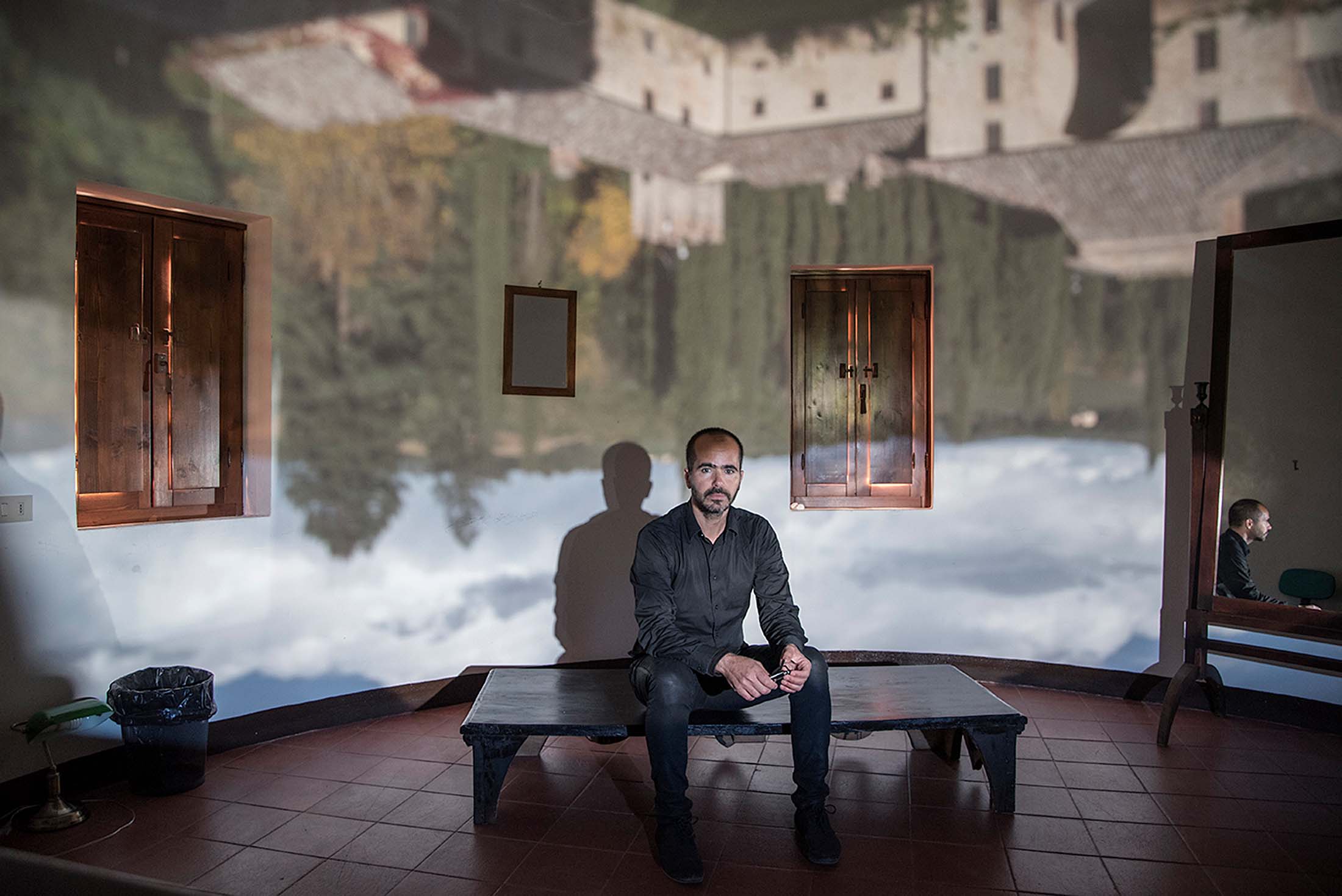
by J. Howard Rosier (MFA 2018)
To Wafaa Bilal (MFA 2003), how technology can illuminate human agency—or a lack thereof—is not new, or even controversial.
His work uses video games, camera footage, and interactivity as conduits to illuminate how much power the West has, comparatively, if only they would stop and think about it. Crucial to his work is not only the scenarios it introduces; Bilal is also deeply concerned with how viewers respond to it—whether their response is congruent with pervading narratives, and whether the viewer can realize that through their experience as an arts patron.
Bilal was born and raised in Iraq under Saddam Hussein, where he and his family’s acceptance of the status quo steadily hardened into resistance. “Our family had an X mark next to it,” he said. Bilal attributes being denied a spot at the College of Fine Arts at the University of Baghdad to his family’s vocal resistance to the regime. He was sent to study geography and geology instead.
“[In the 1980s], if you refused to go to college, that was a death sentence,” Bilal said. “Then you would go to fight on the front line with Iran.” Fortunately, every college in Iraq had studio spaces back then, so Bilal was still able to continue his practice, which at that time was centered around painting.
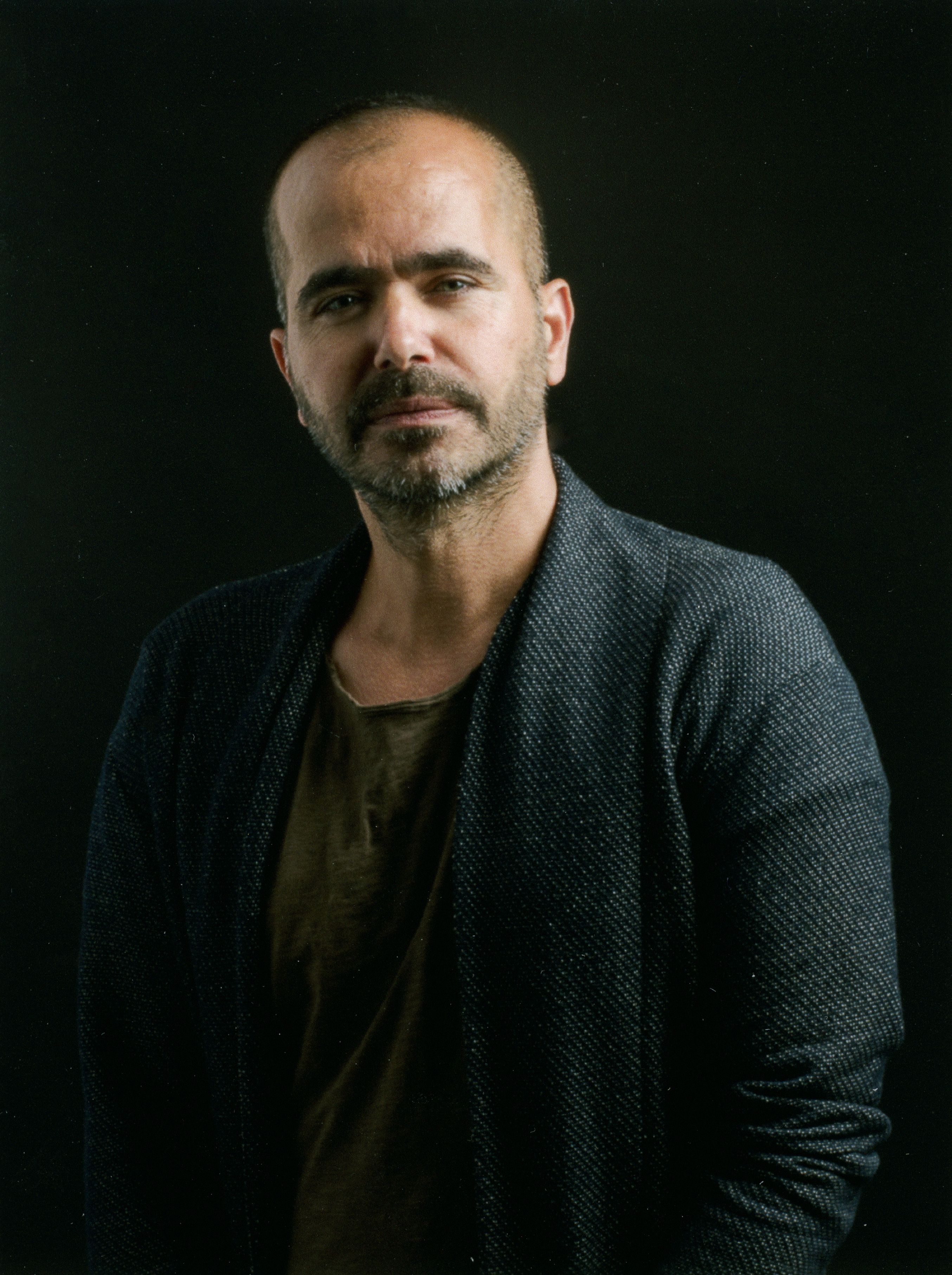
Wafaa Bilal. Image courtesy of Creative Capital
Wafaa Bilal. Image courtesy of Creative Capital
“And at the very end of 1990, I was part of a small protest against the regime invasion,” he said. Iraq’s conflict with Iran had recently ended in 1988, and the invasion of Kuwait began—the country was eventually liberated during the Gulf War—but led to crackdowns against dissidents in Bilal’s home country. On the run, Bilal found himself on the Kuwait/Iraq border, staying with the American military for 45 days until he was transferred to a temporary refugee camp in Saudi Arabia, where he stayed from 1991 through 1992.
“We adopted a few strategies to maintain our sanity and make sure we remained alive,” Bilal said. Connections made with the drivers who brought food and water into the camp created a pipeline for supplies. He built a studio, inviting people in the camp to participate and children to practice and gain instruction.
One of Bilal’s friends in the camp was a translator for American soldiers. Both Bilal and his friend wound up being sponsored by one of them as refugees for admittance to the US. They wound up in New Mexico (where the soldier lived). “I was very lucky,” Bilal said. He enrolled in the University of New Mexico’s bachelor of fine arts program, where he began exploring art and technology toward the end of his degree. This was 1999, when the internet was just beginning to open up.
“Art and tech at SAIC really give me the foundation to merge these two things, and, to me, I cannot separate them now because technology became a tool of reaching my audience and also a platform to allow people to interact truly and freely with any topic I propose.”
“I realized the power of expanding the platform from just limited access to privileged people or people who love our work to everybody in their own comfort place, such as in the home, office, and so on,” Bilal said. He applied to graduate programs and got into the School of the Art Institute of Chicago (SAIC), where he was interviewed by Professor Emeritus Peter Gena and Professor Shawn Decker, who explained the School’s Art and Technology Studies department to him.
“I immediately fell in love,” Bilal said. “Art and tech at SAIC really give me the foundation to merge these two things, and, to me, I cannot separate them now because technology became a tool of reaching my audience and also a platform to allow people to interact truly and freely with any topic I propose.”
Bilal’s breakout work, Domestic Tension (2007), came when he was teaching as an adjunct at the School. “It was the most intense year in the war with Iraq,” Bilal said. “So many American soldiers got killed, the country is about to go into civil war, and people are searching for a platform to exchange ideas to talk. People are angry.” With the aid of former Associate Professor, Adj. Dan Miller, former Associate Professor Ben Chang (MFA 2000), Shawn Lawson (MFA 2003), and some graduate students, Bilal came up with the project’s conceit. For a month, he locked himself in a small room at Chicago’s FlatFile Gallery, where he could be seen around the clock through a camera that he had connected to the web. Bilal set up a remote-controlled paintball gun that viewers could use to shoot him at any time. The work was a commentary on the Western disconnect from the casualties inflicted on Iraqis via drone strikes, as well as the physical confinement that war forced upon its citizens on a daily basis.
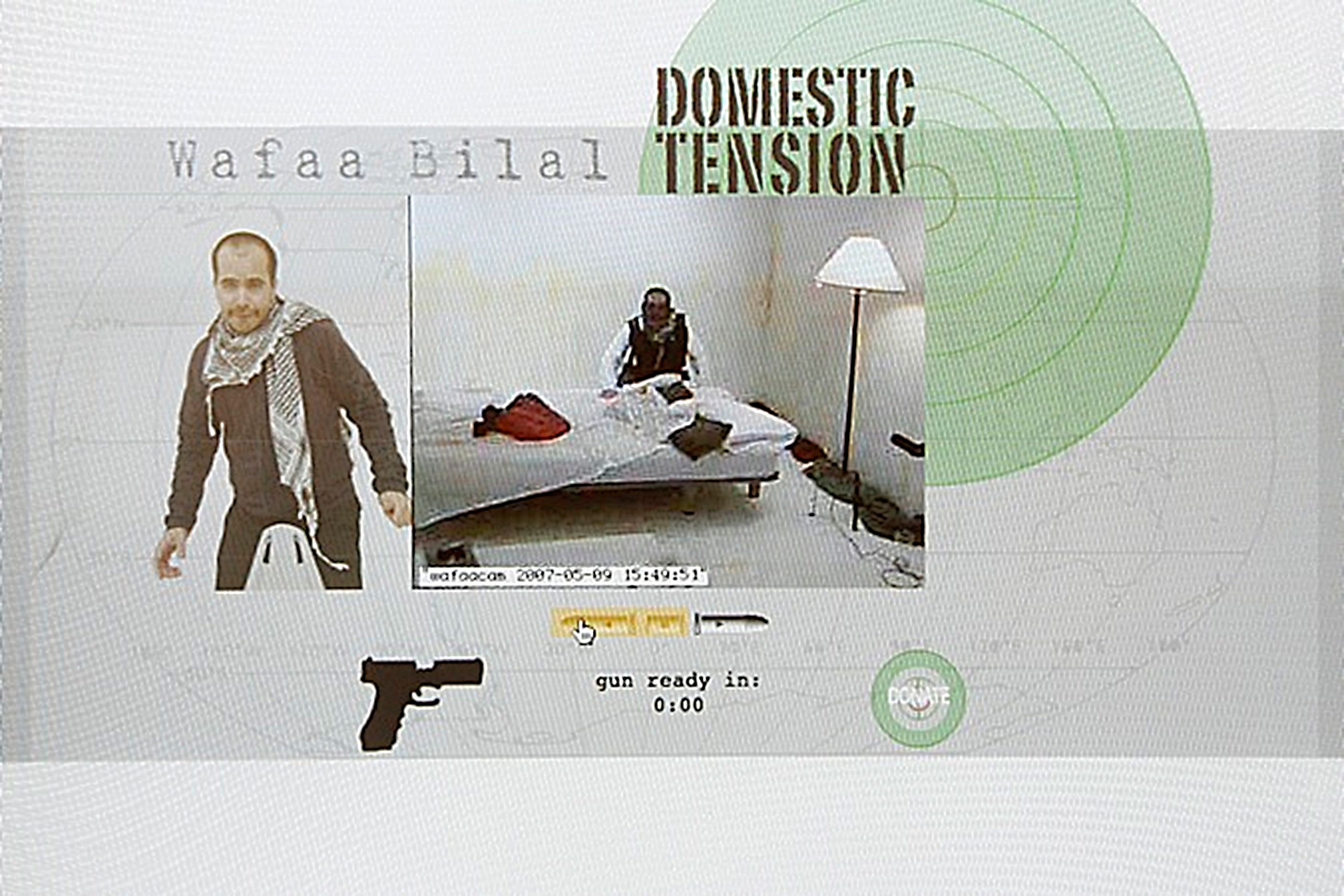
Imagery from Bilal's Domestic Tension. Image courtesy of the artist
Imagery from Bilal's Domestic Tension. Image courtesy of the artist
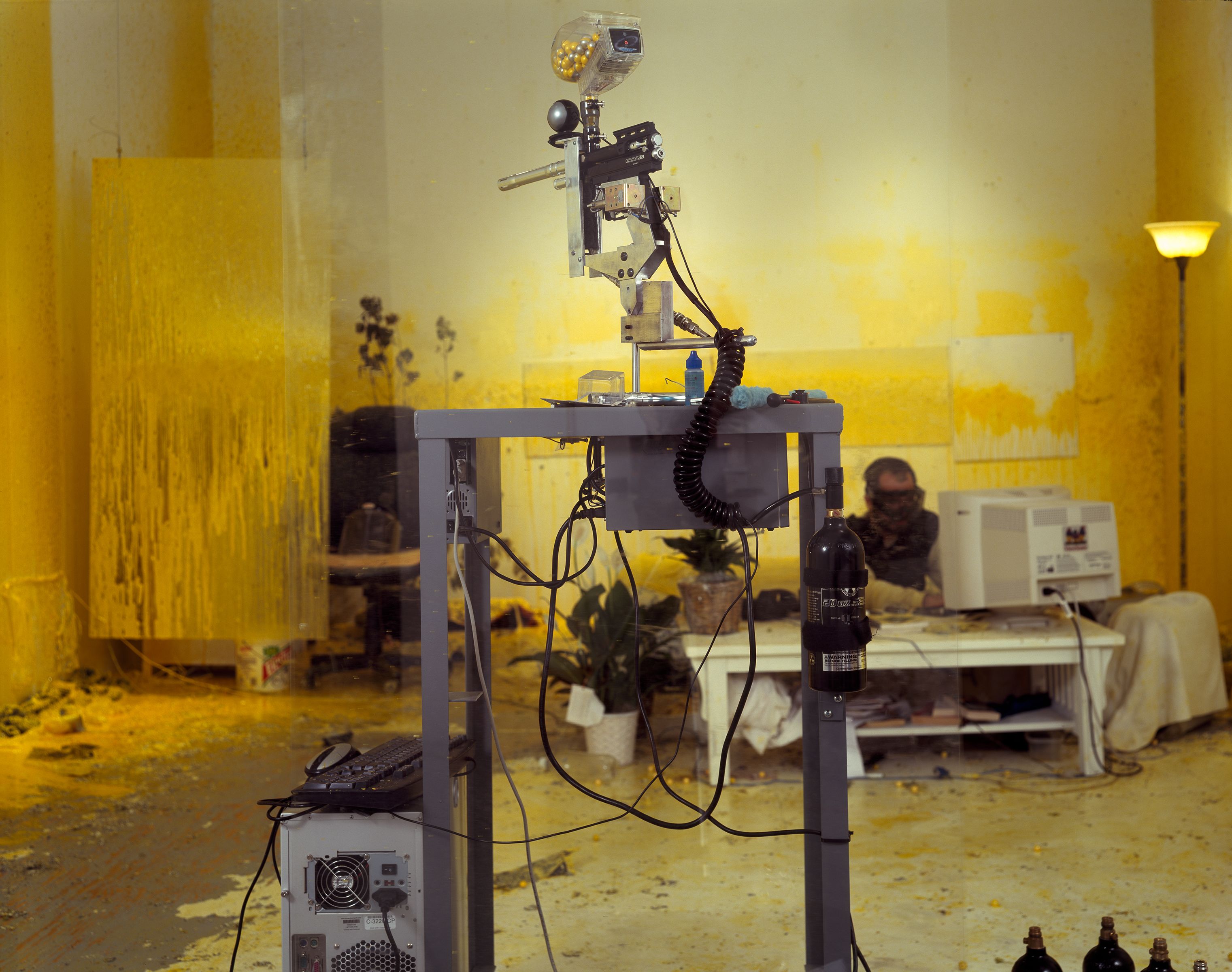
Images from Bilal's Domestic Tension. Image courtesy of the artist
Images from Bilal's Domestic Tension. Image courtesy of the artist
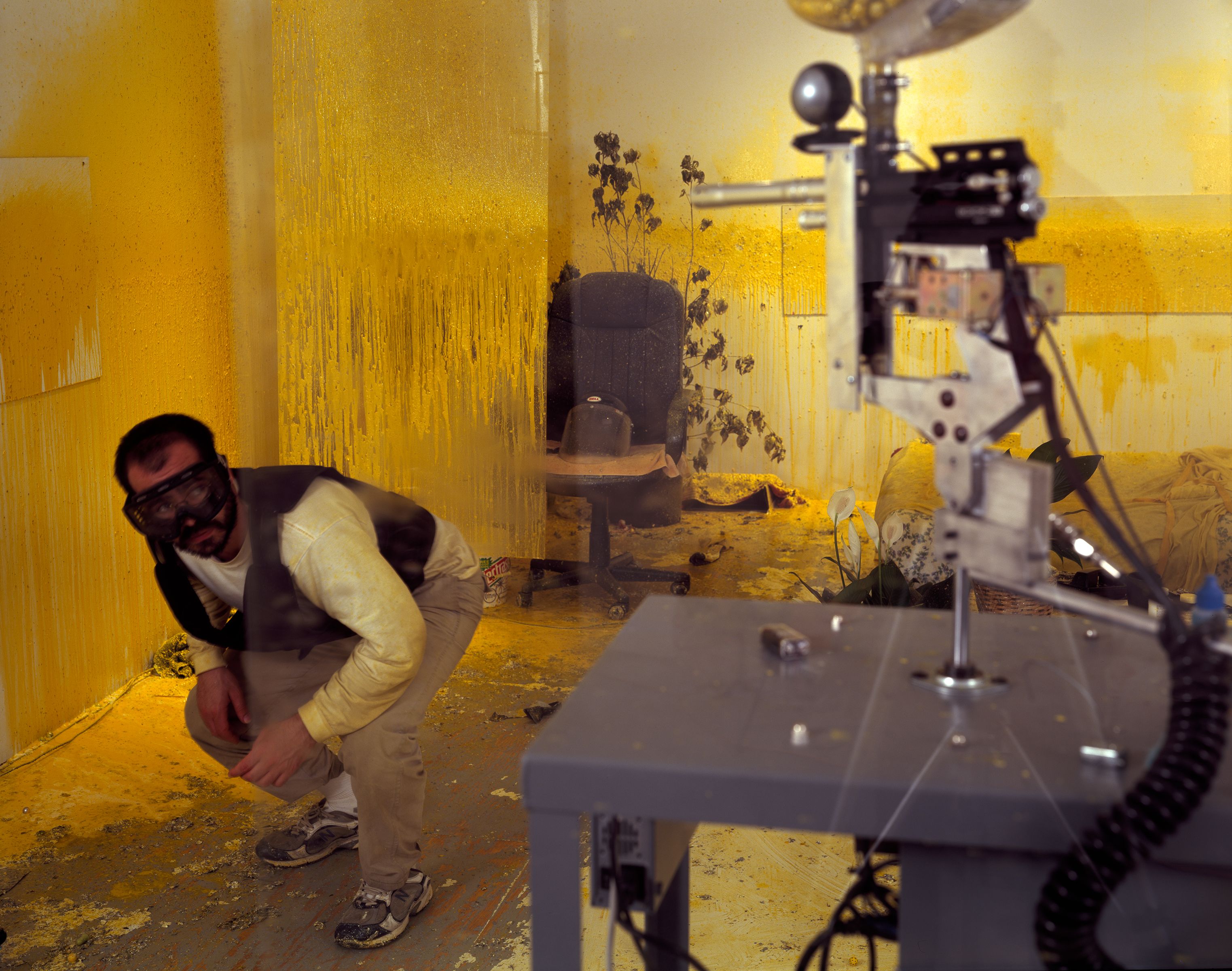
Images from Bilal's Domestic Tension. Image courtesy of the artist
Images from Bilal's Domestic Tension. Image courtesy of the artist
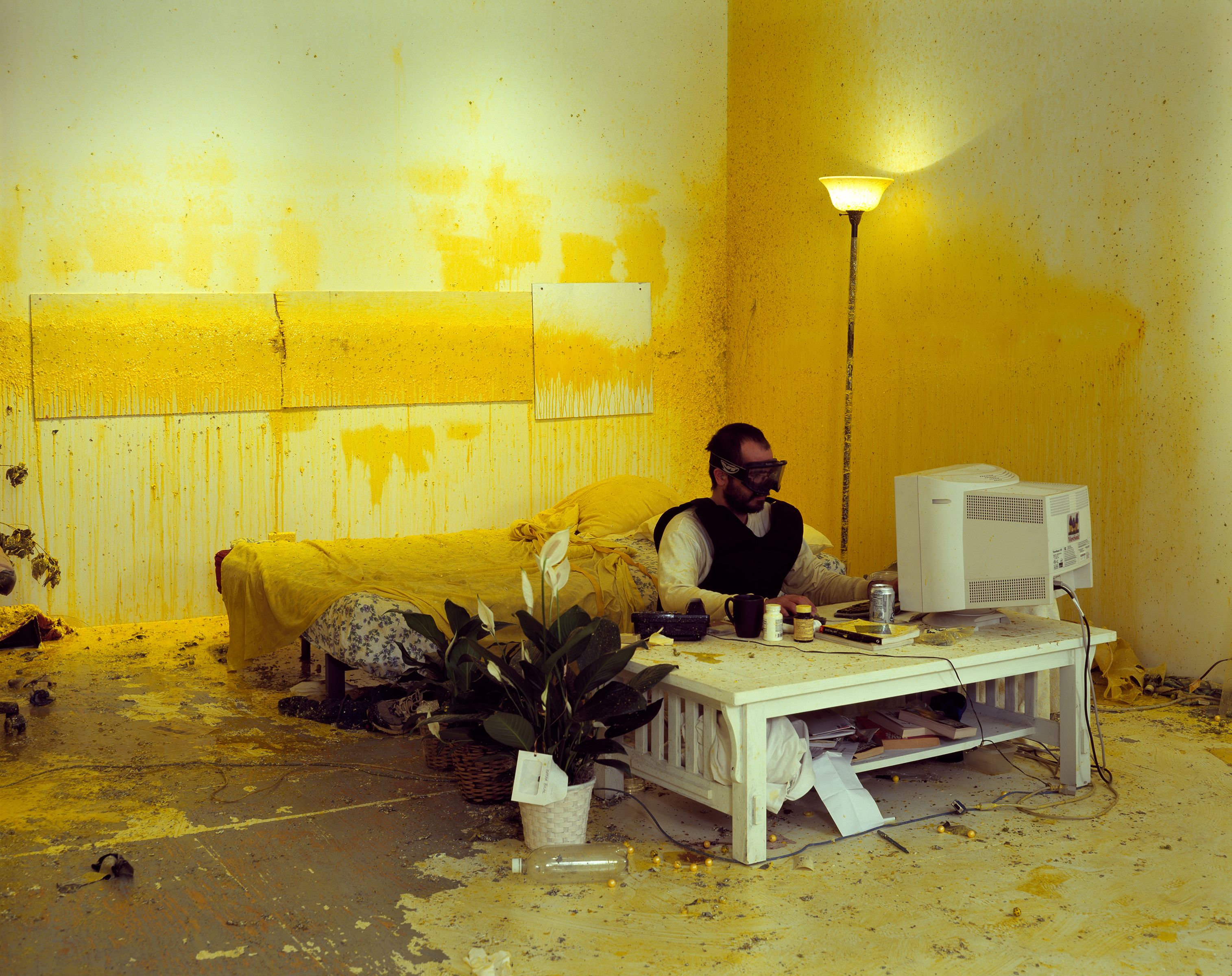
Images from Bilal's Domestic Tension. Image courtesy of the artist
Images from Bilal's Domestic Tension. Image courtesy of the artist
“The project was inspired, sadly, by the death of my brother in our hometown,” Bilal said. “It brought people from different cultural perspectives together and made the conversation more compelling. Because I also did not control how netizens interacted with each other, nor what people wrote to each other in the chat, engagement occurred organically and the interaction was left to rhizome beyond the initial objective.”
The project gained Bilal international attention and doubtlessly contributed to his hiring at New York University (NYU) in 2008. His most recent project, In a Grain of Wheat (2021–), archives the 3,000-year-old sculpture Winged Bull of Nineveh inside the DNA of Iraqi wheat seeds. Bilal says this work is representative of his current research in post-conflict reconstruction and reconciliation. All of Bilal’s projects leverage technology to create dialogues between different planes of communication.

3D model of Winged Bull of Nineveh. Image courtesy of the artist
3D model of Winged Bull of Nineveh. Image courtesy of the artist

3D model of Winged Bull of Nineveh. Image courtesy of the artist
3D model of Winged Bull of Nineveh. Image courtesy of the artist
“Technology has enabled me to communicate, to inspire, to inform.”

A screenshot of Bilal and Shawn Lawson working on a 3D rendering of Winged Bull of Nineveh. Image courtesy of the artist
A screenshot of Bilal and Shawn Lawson working on a 3D rendering of Winged Bull of Nineveh. Image courtesy of the artist
At NYU, Bilal’s courses are just as malleable as his art practice. He teaches photography, but his main area is performance—the practice, its history, and the critical study behind it. Regarding technology’s reach in the future, he foresees the gadget disappearing as an intermediary, with cognition becoming inextricably linked with the digital realm. He also predicts that the mediums through which people connect and share knowledge will become more important than the accumulation of knowledge itself.
“Technology has enabled me to communicate, to inspire, to inform,” Bilal said. “That is what really is important for me.” ■
